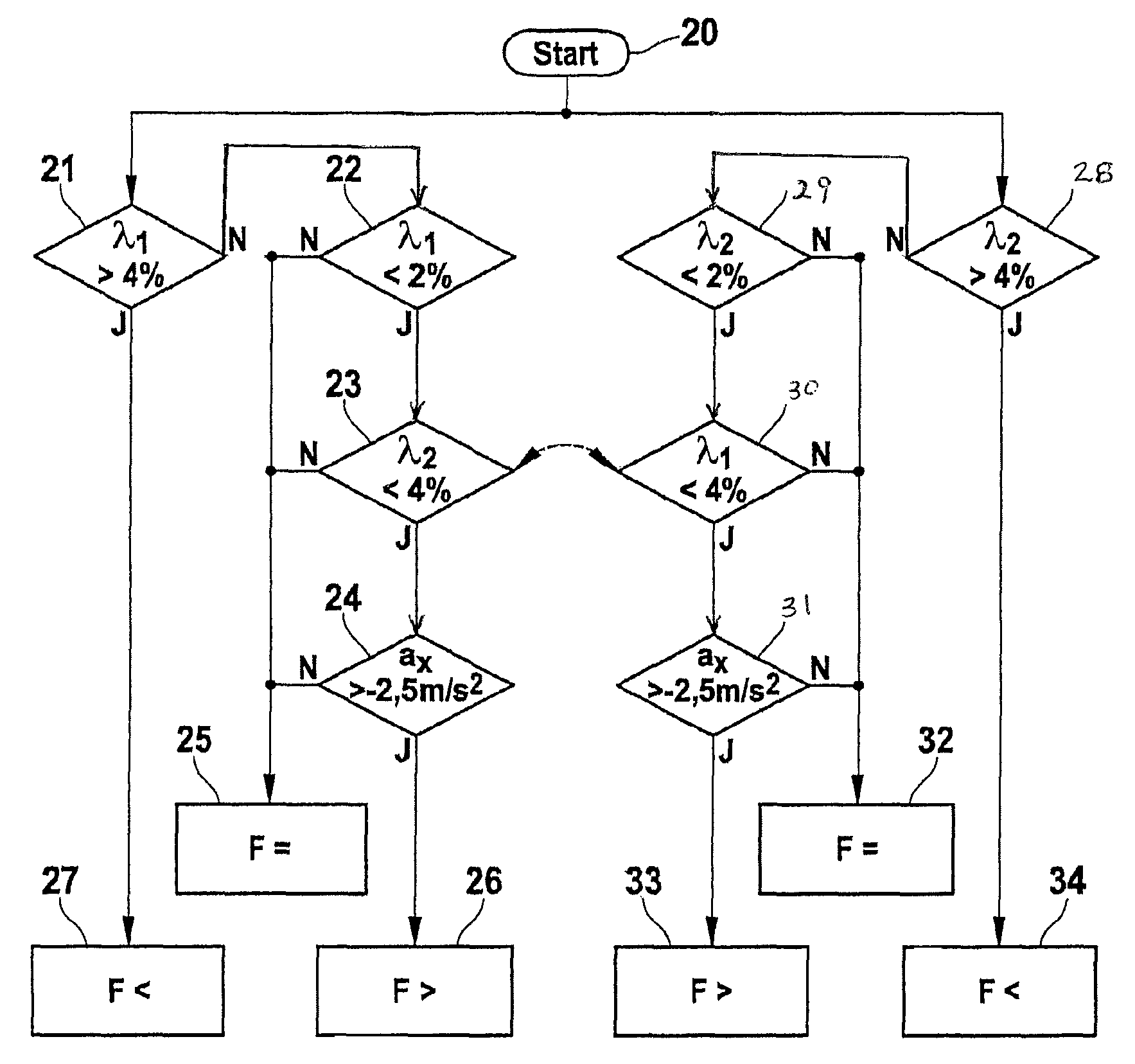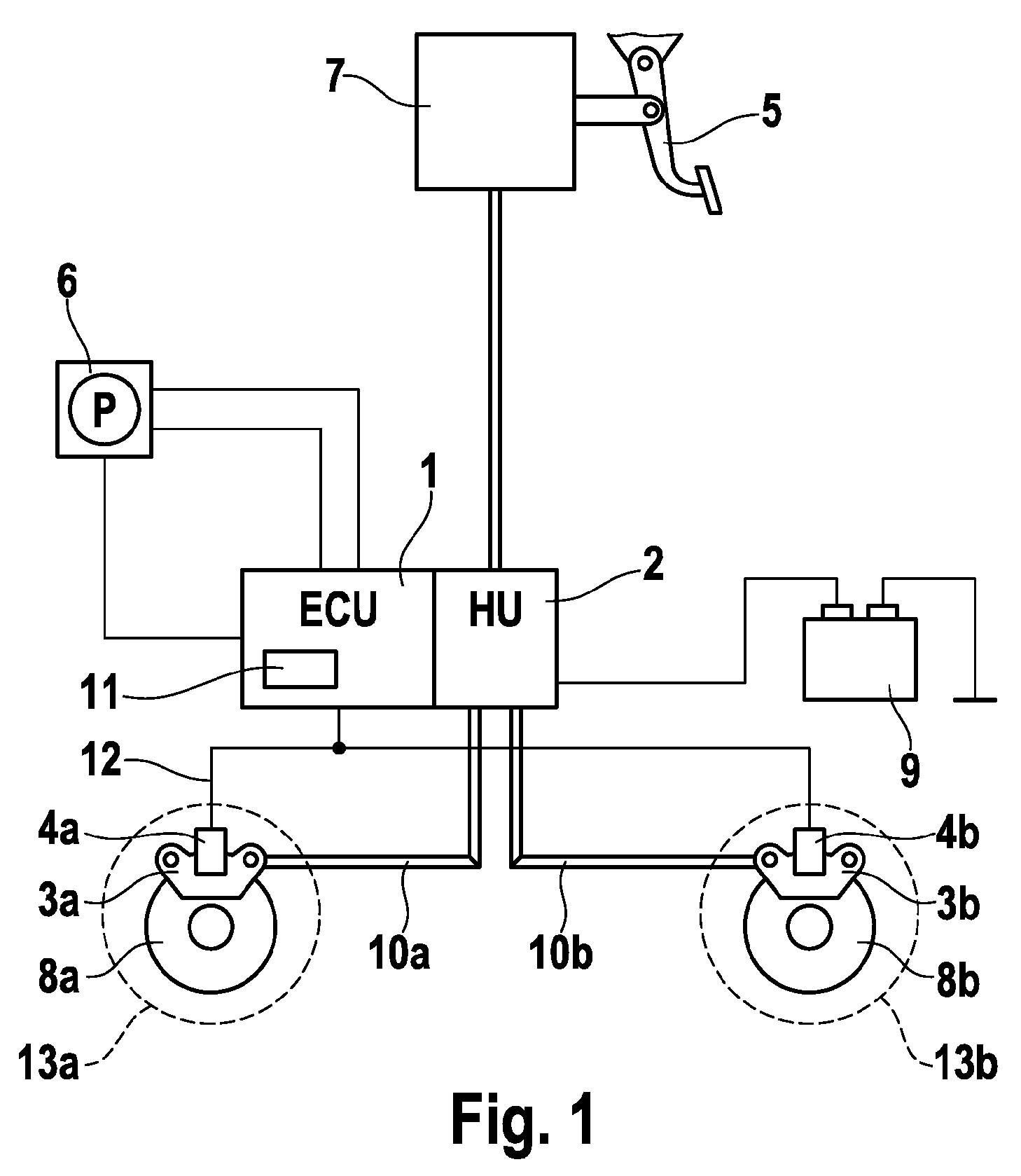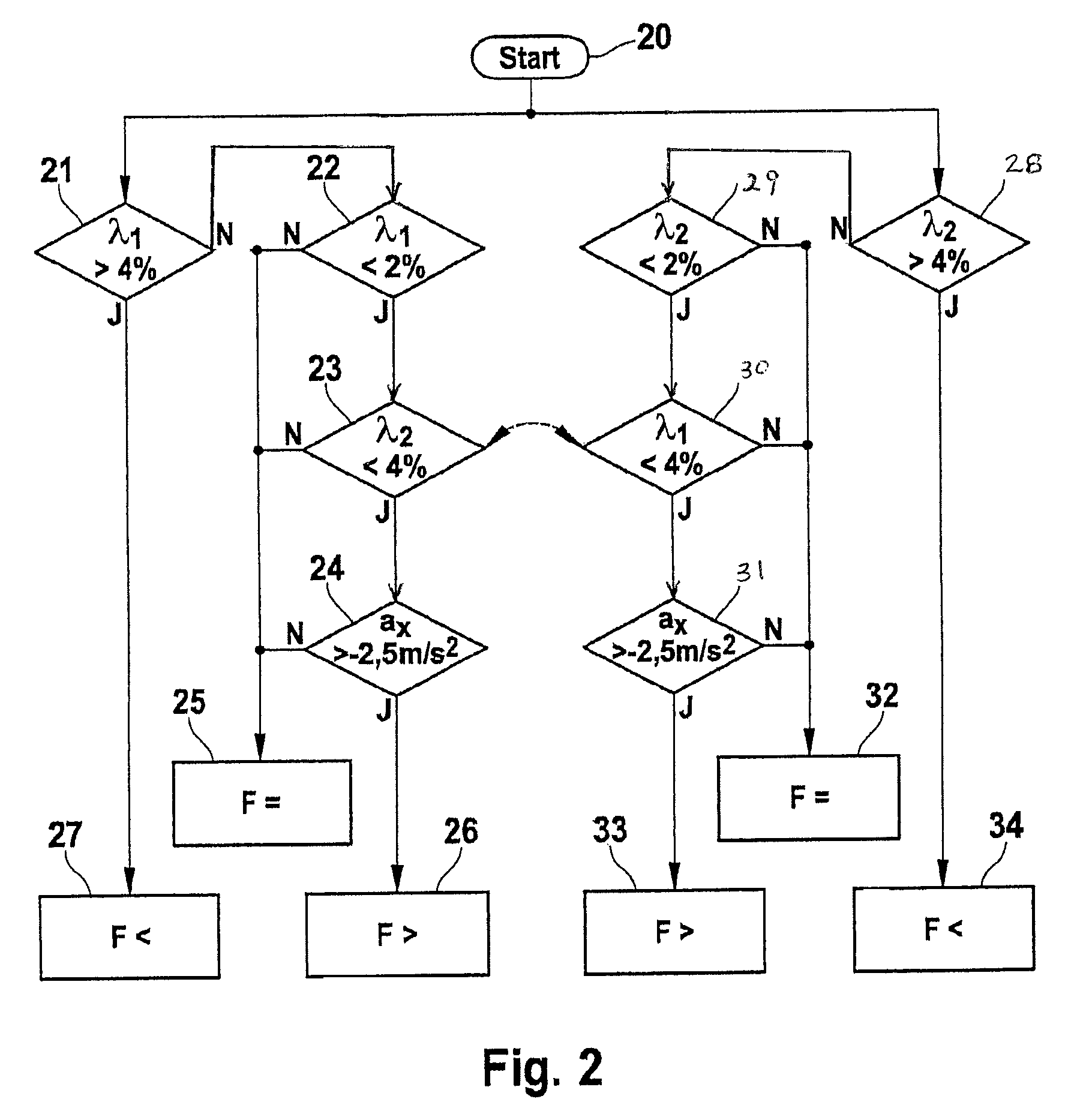Automatic parking brake having a slip controller
a technology of automatic parking brake and controller, which is applied in the direction of braking system, vehicle position/course/altitude control, instruments, etc., can solve the problems of braked wheels being too long to lock, poor controllability of electromechanical systems, and substantially slower mechanical components response, and achieve positive effects on control respons
- Summary
- Abstract
- Description
- Claims
- Application Information
AI Technical Summary
Benefits of technology
Problems solved by technology
Method used
Image
Examples
Embodiment Construction
[0016]FIG. 1 shows a block diagram of a hydraulic braking system having an automatic parking brake according to an embodiment of the present invention. In an available manner, the braking system includes a foot brake pedal 5, which acts together with a main brake cylinder via a brake booster (combined in block 7). The brake pressure produced by the driver and amplified is conducted via a hydraulic unit 2, which is designed to perform a slip control, and brake lines 10a, 10b to wheel brakes 3, 8. Wheel brakes 3, 8 are implemented in this example embodiment as disk brakes, which respectively include a brake caliper 3 and a brake disk 8.
[0017]The automatic parking brake includes an operating element 6 (e.g. a push-button switch) for activating and deactivating the parking brake, a control unit 1, connected to push-button switch 6, in which a parking brake algorithm having a slip controller 11 is stored, and multiple electric motors 4a, 4b, which are respectively mounted on a brake cali...
PUM
 Login to View More
Login to View More Abstract
Description
Claims
Application Information
 Login to View More
Login to View More - R&D
- Intellectual Property
- Life Sciences
- Materials
- Tech Scout
- Unparalleled Data Quality
- Higher Quality Content
- 60% Fewer Hallucinations
Browse by: Latest US Patents, China's latest patents, Technical Efficacy Thesaurus, Application Domain, Technology Topic, Popular Technical Reports.
© 2025 PatSnap. All rights reserved.Legal|Privacy policy|Modern Slavery Act Transparency Statement|Sitemap|About US| Contact US: help@patsnap.com



